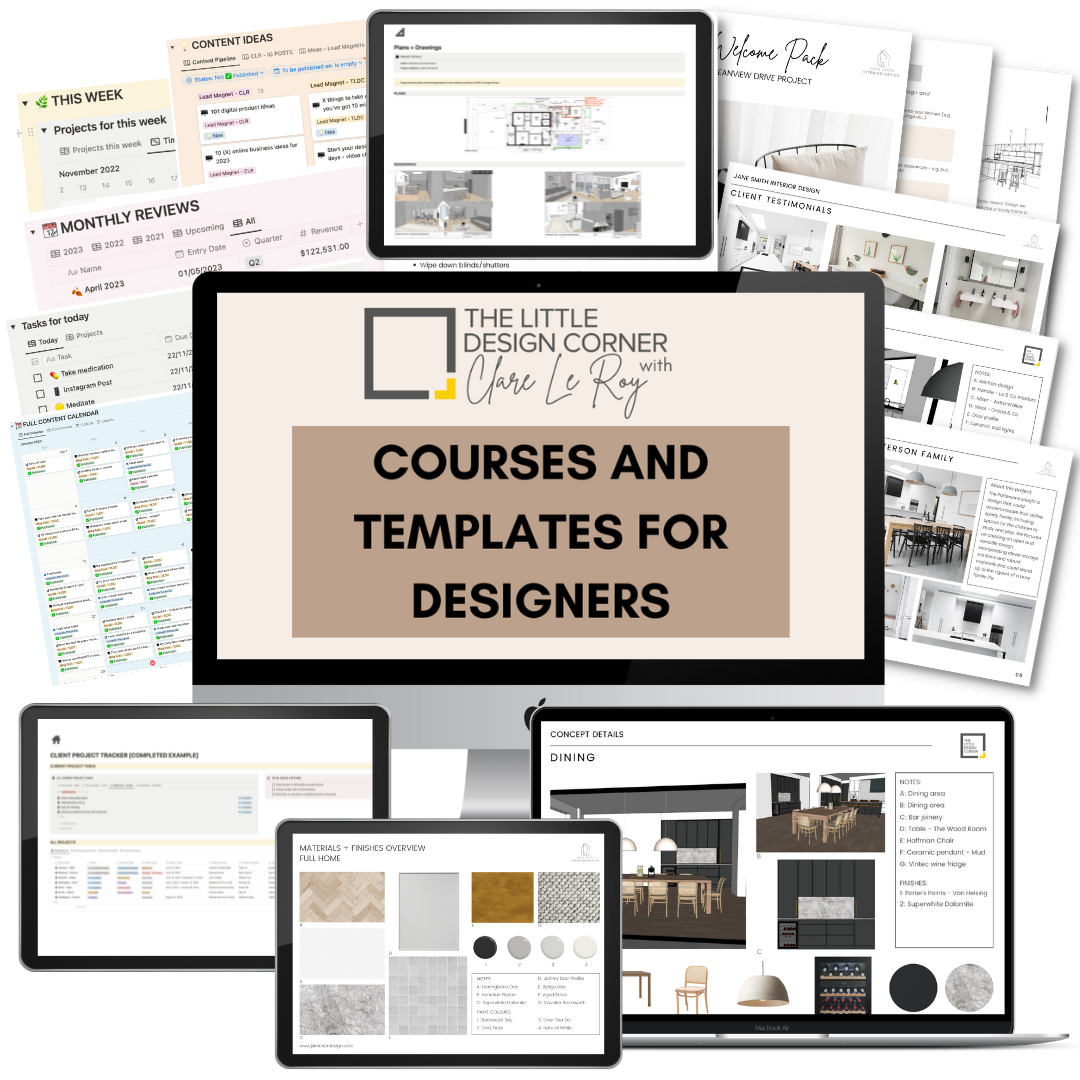38 reasons you need to use a design contract (agreement)
Most designers don’t realise that there can be significant risk associated with working with clients.
After all this is their largest financial asset (their home) and if something goes wrong, they will likely be very unhappy.
A contract (design agreement) is there to protect you and your business if things go wrong during a design project.
Here are 38 reasons why you MUST have one (that you haven’t DIY-ed yourself)...
Protects your business, sets clear boundaries and expectations, protects your interests, outlines who is responsible for what
Prevents scope creep by clearly outlining what is and isn't included in your services
Makes sure you get paid on time and in full for your work
Sets clear deadlines for both you and the client, keeping the project on track
Defines how mid project changes will be handled and billed
Protects you if legal disputes, claims or lawsuits arise
Outlines what happens if either party needs or wants to terminate the agreement
Specifies who owns the designs and other intellectual property
Reduces the risk of miscommunication by putting everything in writing
Shows clients you're serious about your business and their assets/project
Outlines how disagreements will be resolved, potentially avoiding costly legal battles
Specifies how delays in material or furniture delivery will be handled
Outlines what you need from the client to complete the project successfully
Establishes how and when client approvals will be obtained
Clarifies your role in the project
Protects your client's sensitive information
Sets expectations for how and when you'll communicate with the client
Outlines what happens in case of unexpected events
Clarifies when the project is considered complete and how final sign off occurs
Specifies any guarantees on your work or procured items
Outlines how requests for work beyond the original scope will be handled
Helps prevent misunderstandings that could lead to negative reviews
Protects you from unreasonable client demands or expectations
Gives you a solid foundation for legal action (if needed)
Helps break down large projects into manageable phases with specific deliverables
Prevents disputes over the quality of materials used in the project
Clarifies what the client needs to provide or do to keep the project on track
Prevents clients from expecting 24/7 availability or work outside normal business hours
Outlines how unexpected issues with their property will be handled and who is responsible
Clarifies what insurance coverage is needed and who is responsible for obtaining it
Defines how changes to the original plan will be proposed, approved and billed
Specifies what documents (drawings, receipts, etc.) will be provided to the client
Clarifies who will obtain necessary permits and handle inspections
Outlines how delays caused by either party will be handled and any associated penalties
Specifies steps to resolve disagreements before resorting to legal action
Outlines how items provided by the client will be incorporated and any associated limitations
Establishes safety standards for the work site and responsibilities for maintaining them
Outlines how and when the client will review and approve design elements, preventing last minute changes
Get a good lawyer to put together a solid design contract. Don’t DIY your legal work!
You’ll thank me if you ever need to rely on it in a legal dispute.
Thanks for reading and catch you in my next post :)
Clare x
Dr Clare Le Roy
Courses and Templates for Designers and Architects
DO YOU WANT TO….
Improve your professionalism?
Find more clients?
Bring in more revenue?
Create better systems and processes?
Then check out my business courses and templates for designers and architects.
These courses and templates leave you with work done - not just a long list of things you need to do next. We have a really strong focus on taking action and getting things created that improve your business.








